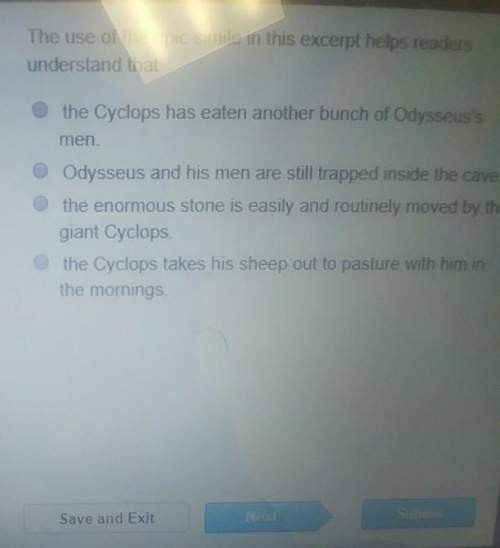
History, 09.04.2021 14:00 manuellopez1981
Discuss the development of manuscript painting in the various regions or historical periods covered in this chapter. What elements are indigenous, and what influences came from outside contacts or sources? Use examples to support your discussion post.
EARLY MEDIEVAL EUROPE
Merovingians, Anglo-Saxons, and Vikings 5th to 10th Centuries
After the fall of Rome in 410, the Merovingians, Anglo-Saxons, Franks, Goths, Vikings, and other non-Roman peoples competed for power in the former northwestern provinces of the Roman Empire. Other than the ornamentation of ships used for burials, the surviving artworks of this period are almost exclusively small-scale status symbols, especially items of personal adornment such as bracelets, pins, purses, and belt buckles, often featuring cloisonné decoration. A mixture of abstract and zoomorphic motifs appears on these portable treasures. Especially characteristic are intertwined animal and interlace patterns.
Example art: Merovingian fibulae, mid-sixth century
Hiberno-Saxon Monasteries 6th to 10th Centuries
Art historians call the Christian art of the early medieval British Isles Hiberno-Saxon or Insular. The most important extant artworks are the illuminated manuscripts produced in the monastic scriptoria of Ireland and Northumbria-for example, the Lindisfarne Gospels and the Book of Kells. These Insular books feature folios devoted neither to text nor to illustration but to pure embellishment. "Carpet pages" consist of decorative panels of abstract and zoomorphic motifs. Some books also have full pages depicting the four evangelists or their symbols. Text pages often present the initial letters of important passages enlarged and transformed into elaborate decorative patterns.
Example art: Lindisfarne Gospels, ca. 698-721
Carolingian Empire 768-877
Charlemagne, king of the Franks since 768, expanded the territories he inherited from his father, and in 800, Pope Leo III crowned him emperor of Rome (r. 800-814). Charlemagne and his successors initiated a conscious revival of the art and culture of Early Christian Rome in their capital at Aachen. Carolingian sculptors revived the imperial Roman tradition of portraying rulers on horseback holding the orb of world power as well as the Early Christian tradition of depicting Christ as a statuesque youth. The books that Carolingian artists produced sometimes featured magnificent jeweled covers (Lindau Gospels). Carolingian manuscripts merged the illusionism of classical painting with the northern European linear tradition, replacing the calm and solid figures of those models with figures that leap from the page with frenzied energy, as in the Ebbo Gospels and the Utrecht Psalter. Carolingian architects looked to Ravenna and Early Christian Rome for models but transformed their sources, introducing, for example, the twin-tower western facade for basilicas at Corvey and elsewhere and employing strict modular plans for entire monasteries as well as individual churches, as seen in the plan of the Saint Gall monastery in Switzerland.
Examples of art: Charlemagne or Charles the ninth century and Abbey church, Corvey, 873-885
Ottonian Empire 919-1024
In the mid-10th century, a new line of emperors, the Ottonians, consolidated the eastern part of Charlemagne's former empire and sought to preserve and enrich the culture and tradition of the Carolingian period Like other early medieval artists, Ottonian artists excelled in producing small-scale artworks, especially ivory plaques with narrative reliefs, often influenced by Byzantine art. But Ottonian sculptors also revived the art of large-scale sculpture in such works as the Gero Crucifix and the colossal bronze doors of Saint Michael's at Hildesheim. Ottonian painters combined motifs and landscape elements from Late Antique art with the golden backgrounds of Byzantine art. Ottonian architects built basilican churches incorporating the towering spires and imposing westworks of their Carolingian models, but introduced the alternate-support system and galleries into the nave elevation
Example art: Saint Michael's, Hildeshei doors, 1015

Answers: 3


Another question on History


History, 22.06.2019 04:30
What industry was exempt from the child-labor laws passed in the factory act of 1833?
Answers: 1

History, 22.06.2019 06:00
Which piece of information would most a historian create an interpretation of this photograph of works in a factory?
Answers: 2

History, 22.06.2019 16:30
Webster states that, "the constitution does not provide for events which must be preceded by its own destruction." what does he cite as an event that would destroy the constitution?
Answers: 1
You know the right answer?
Discuss the development of manuscript painting in the various regions or historical periods covered...
Questions

Mathematics, 30.12.2020 01:00











Mathematics, 30.12.2020 01:00


History, 30.12.2020 01:00


Chemistry, 30.12.2020 01:00


Mathematics, 30.12.2020 01:00

Arts, 30.12.2020 01:00




